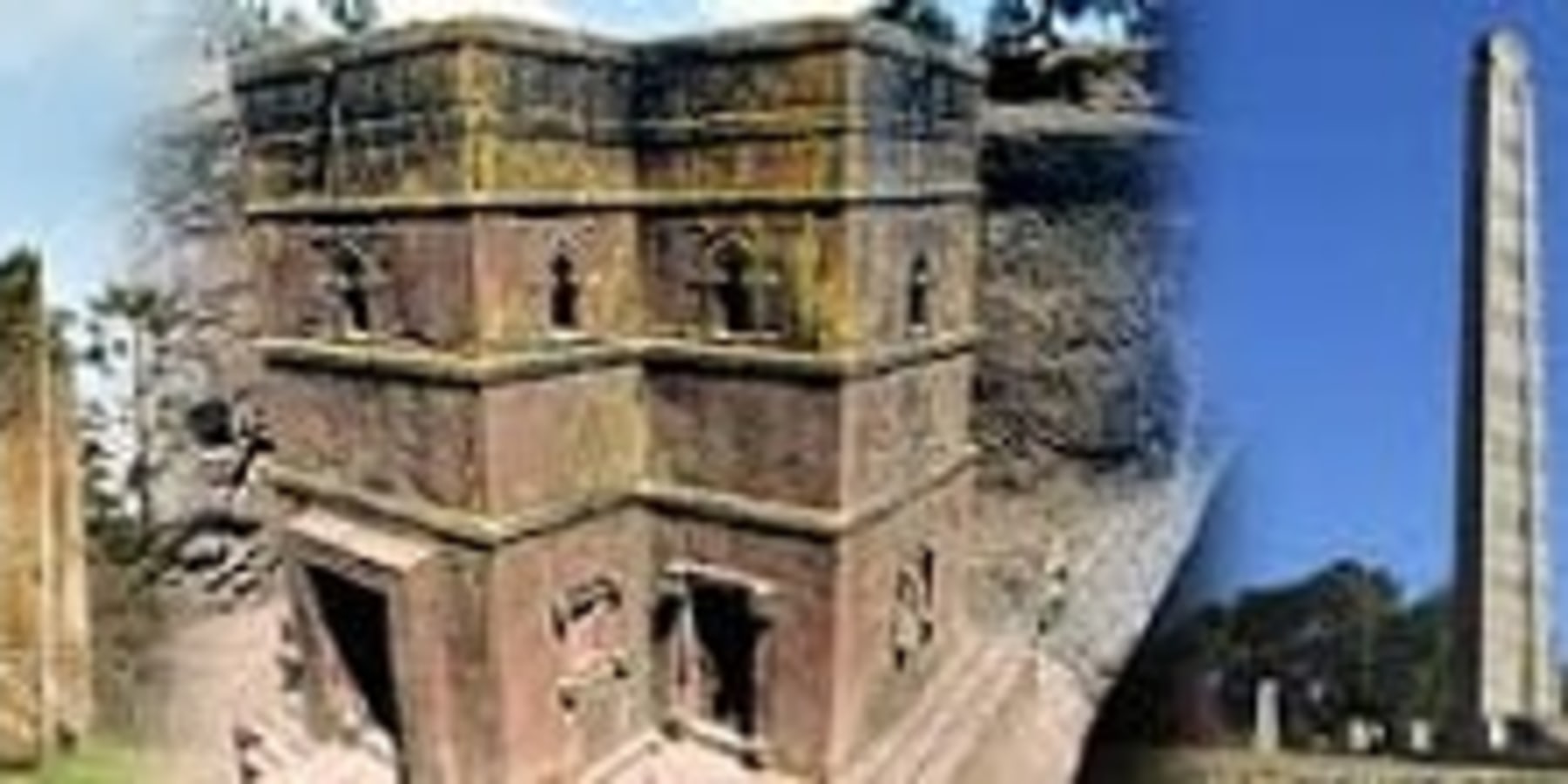
Natural and Cultural Attractions' Ethiopia
Ethiopia’s elevated central plateau covering half of its surface area and supporting over half of its population is the most extensive fertile land in east Africa. The highlands have a remarkable biological endemic species including large mammals such as Red fox, mountain Nyala, Walia Ibex, Gelada Baboons, Menelik Bush Buck. Semen Mountain ranges is one of Africa’s largest ranges studded with at least a dozen peaks topping 4000m mark. This includes Ras Dashen (Dejen) the highest peak in Ethiopia and the fourth highest in Africa. Bale mountain Ranges are peaked by mount Tullu Demtu the second highest point in Ethiopia. The main attractions of both mountain ranges are wild scenery, Endemic species of flora and fauna. The country has also Deserts stretching from the base of the central plateau to the Kenyan, Somali and the Red Sea boarder but they are sparsely populated and have negligible impact on the life of most Ethiopians. Most of these deserts are unlikely to be visited by tourists but some such as The Danakil region (off the beaten track destinations) is emerging as one of popular attraction sights in Ethiopia. The deserts also do support many species of fauna and flora.
The historic route covering the big four in the northern circuitincludes the ancient town of Axum with its carved monuments, Christianfestivals and relics; Lalibela, with its wonderful rock hewn churches, Gondarwith its palaces and castles; Bahir Dar and Lake Tana, on the shore of the lakeproviding an ideal place to explore the lake, its medieval monasteries and BlueNile Falls; the walled Muslim city of Harar and the railway town of Dire Dawain the Eastern part of the country and the Tigrai Rock Hewn Churches.
South Omo is unique and fantastic. Descending from the green urban highland into the low-lying plains of south Omo feels like a journey not merely through space but also through time. South Omo is as close as one can come to an Africa untouched by outside influences. The culturally diverse, immaculately colorful and defiantly traditionalist agro pastoralists who inhabit there region seem to occupy a physical and psychic landscape little different to that of their nomadic ancestors. This is Africa as it once was. Historians believe that the south served for millennia as a kind of cultural crossroads, where quite different ethnic peoples- Cushitic, Nilotic, Omotic and Semitic met as they migrated from the north, west, south and east. The peoples of the lower Omo valley are considered among the most fascinating on the African continent. All in all depending on where one draws the line as many as two –Dozen different tribes occupy south Omo, some numbering tens of thousands, others no more than 500, each one of them culturally unique

